Are you an adrenaline junkie? A nature enjoyer? or perhaps just a person who is simply seeking solace amidst the wild, Montana surely has something for everyone.
But not all seasons are created equal. From unpredictable rain showers to chilly nights, nature keeps us on our toes.
Don’t fret though, for within this mix of weather lies the key to discovering Montana’s true essence. Let me be your guide, as I share with you the things that you need to know to find the best time to visit Montana.
- Related article: How to Plan a Montana Trip
Montana’s Seasonal Weather
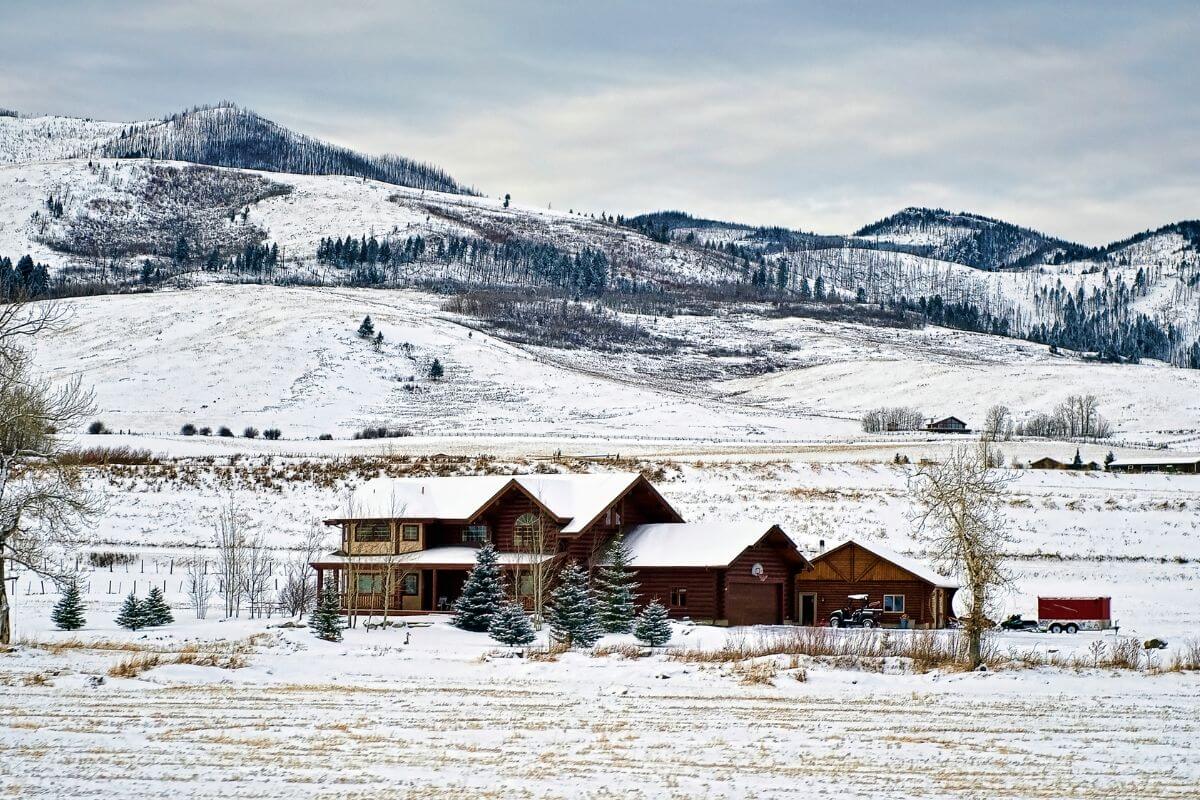
In Montana, you may experience distinct seasonal weather patterns. These patterns are largely influenced by Montana’s northern location and diverse topography.
To simplify things for you, here’s a rundown of the changing weather patterns in Montana throughout the year:
- Winter (November to February): Temperatures often dip below freezing and can even reach sub-zero levels at night. December and January are particularly chilly months.
- Spring (March to June): The weather gradually warms up, causing snow to melt away. By May, temperatures become milder, and signs of new life emerge as greenery blankets the landscape with blooming flowers.
- Summer (July to Early September): Montanans experience warm to hot conditions, especially in lower elevations. In the western part of the state, daytime temperatures frequently surpass 90 ºF. Meanwhile, eastern Montana occasionally faces scorching heatwaves that push mercury levels even higher.
- Fall (Late September to October): Fall is characterized by cooler temperatures and changing foliage. September and October offer pleasant weather with mild temperatures and colorful autumn foliage, especially in the mountains.
It’s essential to note that there can still be considerable temperature variations. These variations are influenced by factors such as the Continental Divide, elevation, local geography, and weather patterns.
The western part of Montana tends to have milder winters and more rain formations due to its closeness to the Pacific Ocean. The eastern plains experience a more continental climate with colder winters and warmer summers.
You might encounter unpredictable weather conditions and surprising fluctuations in temperatures.
- Read more in the guide to Montana Weather Year Round
Effects of Elevation and Topography on Climate
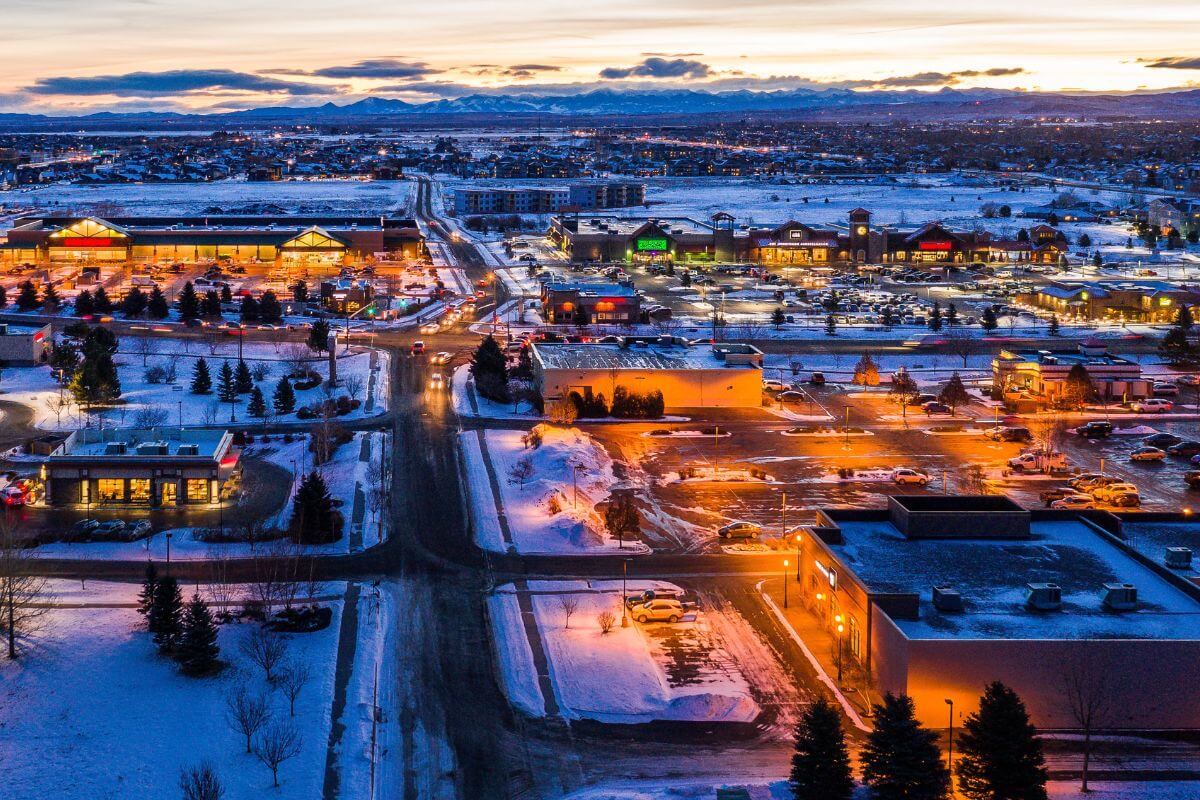
The climate in Montana is greatly influenced by its elevation and topography, which create a diverse range of conditions throughout the state.
So how do elevation and topography affect Montana’s climate specifically?
- Elevation – Elevation plays a role in a region’s climate, impacting temperature, precipitation, and snowfall. Higher elevations generally mean cooler temperatures, more rainfall, and increased snowfall compared to lower areas.
For instance, consider Bozeman at 4,806 feet elevation, which experiences an average spring low of 27 °F. In contrast, Billings, at 3,153 feet elevation, has a spring low averaging 32 °F.
- Topography -Topography also matters as it influences moisture and air patterns. Western Montana, influenced by the Pacific Ocean, enjoys a milder and wetter climate. Conversely, the eastern part has a semi-arid, continental climate.
Knowing the topography and elevation of Montana allows you to make informed decisions regarding activities, timing, and safety, ensuring that you get the most out of your experience while staying comfortable and safe.
With everything said, let us check out the different seasons and explore what is the best time to visit Montana.
- Related: Montana Travel Hints
Montana’s Summer Months (July to Early September)

The summer months in Montana bring pleasant weather and a sense of adventure. If you are looking for a relaxed atmosphere and plenty of sunshine then summer is the best time for you.
But take note that summer is considered a peak tourism season in Montana which means towns and popular attractions are more crowded and busier.
Here are some pros and cons of visiting Montana during the summer months.
| Pros of Visiting During Summer | Cons of Visiting During Summer |
| Warm weather with warmer temperatures | The overwhelming crowds |
| The abundance of outdoor activities | Difficulty finding lodging |
| Availability of skiing options in high-elevation areas | Busyness of popular attractions like Glacier and Yellowstone National Parks. |
Montana’s summer is a double-edged sword, it can offer you warm beautiful weather and an abundance of outdoor opportunities but also presents challenges like crowds and lodging difficulties.
To make the most of your summer trip, plan ahead, explore less crowded areas, and savor the stunning natural beauty of the state.
Popular Activities During Summer in Montana
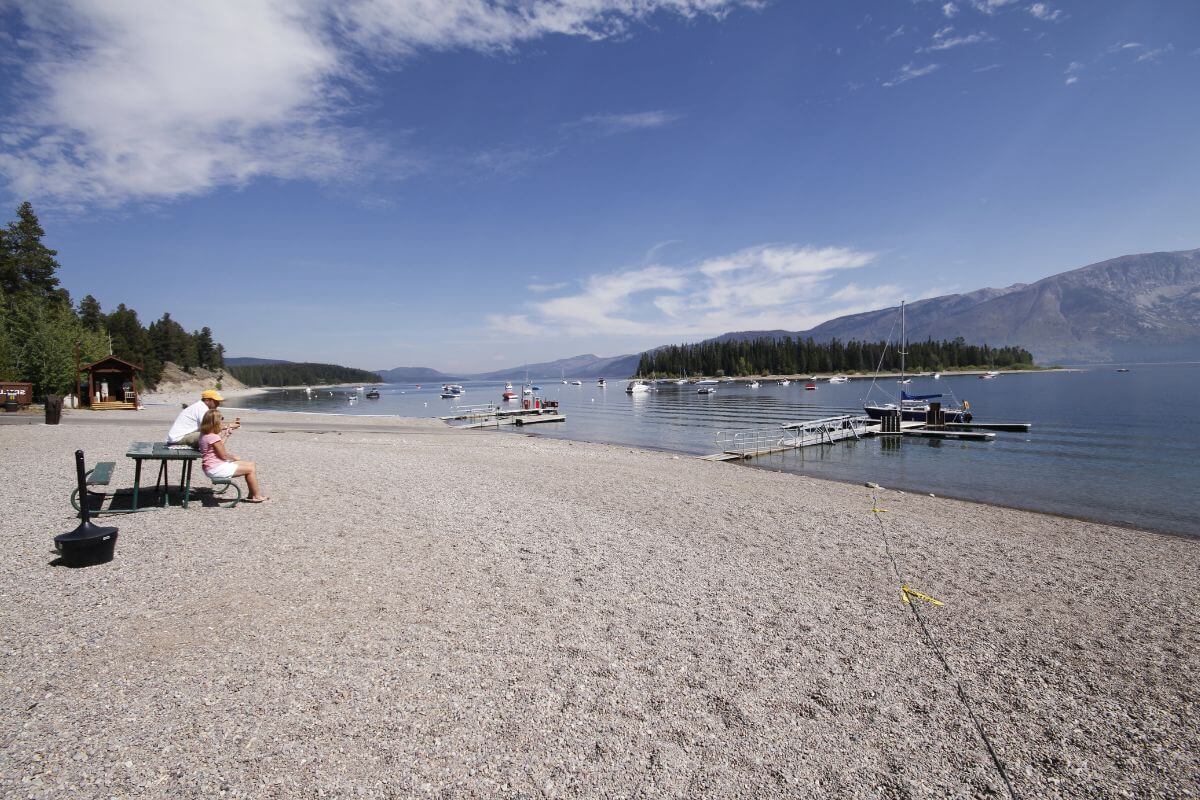
When it comes to summer in Montana, the possibilities for outdoor adventure are as vast and beautiful as the sky above.
Here is a list of activities that you can do during summer in Montana:
- Hiking – Hiking is a favorite activity among locals and visitors alike. With an abundance of hiking trails to choose from, you can explore the stunning landscapes and take in the fresh mountain air.
- Boating – If you are a boating enthusiast you will find bliss on Flathead Lake, the largest freshwater lake west of the Mississippi. With over 192 square miles of crystal-clear water, it’s the perfect place for any water-based adventures.
- Fishing – Fishing enthusiasts will also find their paradise in Montana. From pristine rivers to tranquil lakes, this state is a haven for anglers. With an abundance of trout and other fish species, you can cast your line and reel in the catch of a lifetime.
- Camping – Summer camping in Montana offers a fantastic opportunity to connect with nature and enjoy various outdoor activities. The state’s diverse landscapes, from the national forest to pristine lakes, provide the perfect backdrop for an amazing camping experience.
- Skiing – Let’s not forget about skiing! The Beartooth Pass, a scenic highway that reaches elevations of over 10,000 feet, offers an epic skiing experience. With ski lodges scattered throughout the area, you can hit the slopes and enjoy some of the best powder days around.
- Trip to Glacier National Park – A journey to Glacier National Park is an absolute must when exploring Montana. This park captivates visitors with its stunning scenery, abundant wildlife, and famous attractions such as the awe-inspiring Going-to-the-Sun Road. The Glacier National Park promises a one-of-a-kind adventure for those who appreciate the great outdoors.
These activities represent just a glimpse of what Montana’s peak season has to offer during the summer months.
Whether you’re seeking adventure, relaxation, or a bit of both, Montana’s outdoor playground provides a great experience for all types of travelers.
Montana’s Spring and Fall Months (March to June and September to October)
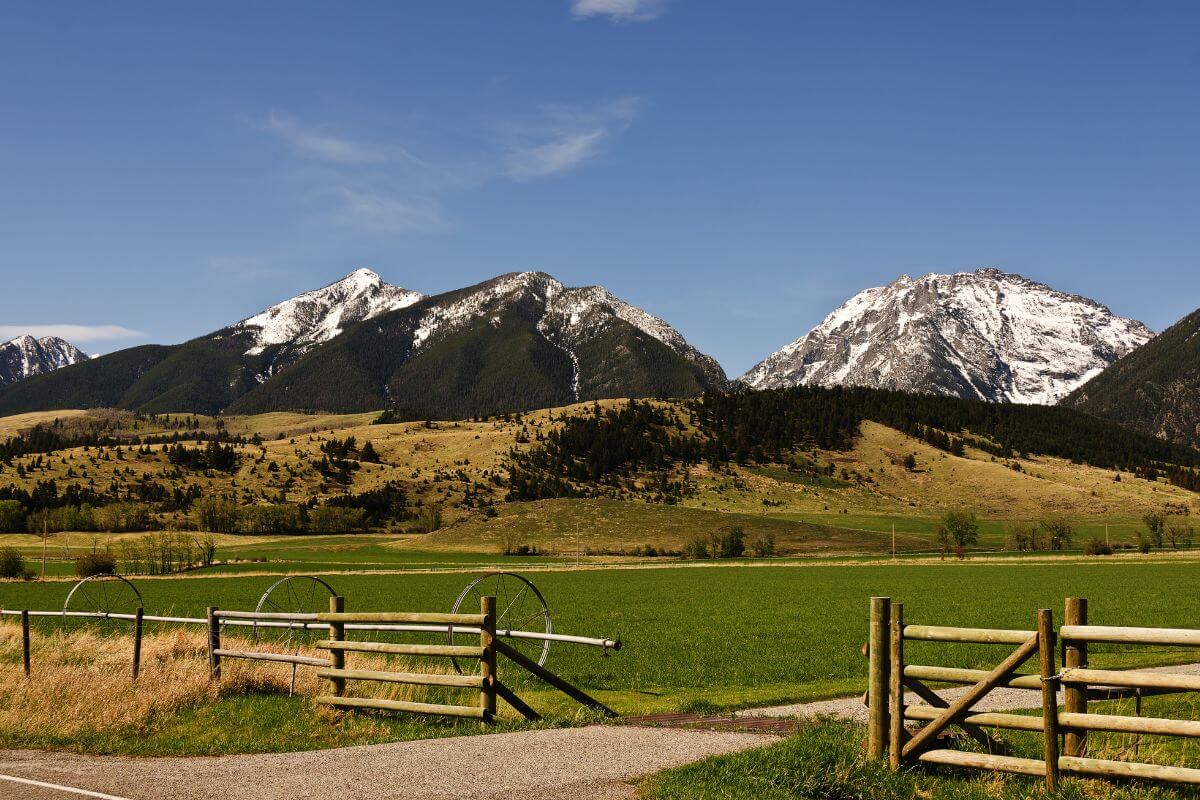
Spring and fall are the secret seasons in Montana, offering a unique and captivating experience for travelers. These seasons are Montanans’ favorite month to explore attractions of the state.
Here are some pros and cons of visiting Montana during the spring and fall months.
| Pros of Visiting During Spring and Fall | Cons of Visiting During Spring and Fall |
| Reduced accommodation prices | Fickle weather or weather can be unpredictable |
| Milder weather compared to winter | Some businesses and attractions may have reduced operating hours during the spring and fall season |
| The opportunity to experience nature’s beautiful autumn foliage | Potential for allergens in the spring |
Visiting Montana during the spring and fall offers the advantage of milder weather, fewer crowds, and potential cost savings due to lower accommodation prices.
When you are visiting during these times you should be prepared for rainy weather conditions and reduced services.
You can be led to rewarding experiences during these transitional periods if you are flexible enough and can plan ahead of time. This makes spring and fall an ideal time for you to visit.
- Montana Spring Vacations
- Explore Montana in April
- Discover Montana in June
- Montana’s Fall Vacation
- Explore October in Montana
Popular Activities During Spring and Fall in Montana
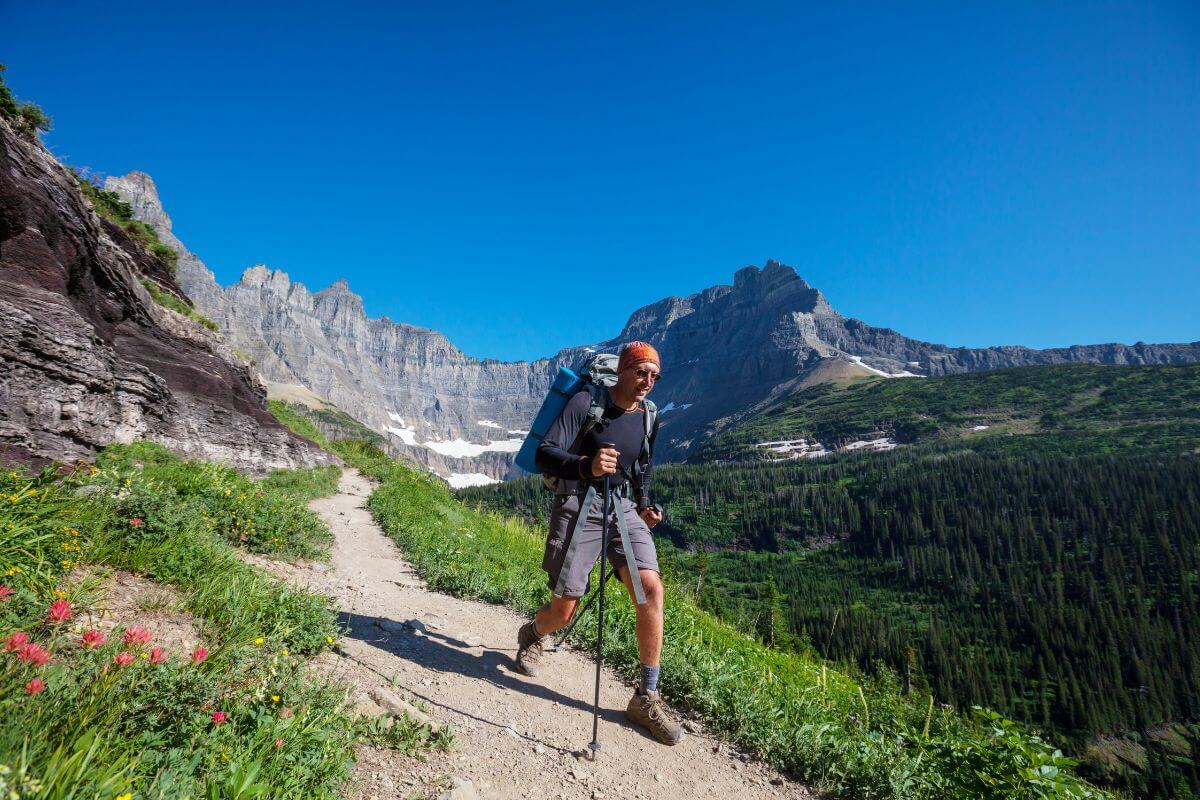
Spring and fall or the shoulder season in Montana is the perfect time to explore nature and a wide range of outdoor activities.
Here is a list of activities that you can do during the shoulder season in Montana:
- Hiking – Hiking is one of the most popular activities during the shoulder which is often referred to as the prime hiking season. With the perfect snow conditions and cool temperatures, it’s the ideal time to hit the trails and immerse yourself in nature.
- Mountain Biking – Mountain biking is another favorite activity during this time. The cooler temperatures make for an invigorating ride through the landscapes of Montana. The wide-open trails are the perfect playground for all cyclists.
- Climbing – For those who seek a more vertical challenge, climbing at lower elevations is a must-do during the shoulder season. The snow-covered mountains offer a unique and exhilarating experience for climbers of all levels.
- Fishing – And let’s not forget about the excellent fishing opportunities in Montana during the shoulder season, especially in the month of October. As the leaves start to change colors, the rivers and lakes come alive with trout and other fish species.
- Visiting Festivals and Events – The shoulder season also brings with it a host of festivals and events such as Great Northwest Oktoberfest and Montana Brewers Fall Rendezvous which celebrate the unique culture and tradition of Montana.
These seasons offer a more tranquil and reflective Montana experience, perfect for those who prefer a quieter atmosphere while still enjoying the state’s beautiful landscapes and outdoor activities.
Montana’s Winter Months (November to February)

If you are seeking a unique and exhilarating winter getaway experience, then winter in Montana is for you.
Here are some pros and cons of visiting Montana during the winter months:
| Pros of Visiting During Winter | Cons of Visiting During Winter |
| You can enjoy various winter activities such as skiing, snowboarding, and ice climbing | Inclement weather. Snow and wind storms are common during this season |
| Great chance to see the wonders of nature by witnessing the Aurora Borealis | The roads can become icy and dangerous, making it difficult to get around |
| Winter can be a great time for wildlife viewing, as animals like elk and bighorn sheep move to lower elevations | Some attractions, lodging options, and restaurants may have seasonal closures during the winter |
| Montana’s winter season tends to be less crowded than the summer | Winter days are shorter, with less daylight for outdoor activities. |
During winter in Montana, it’s essential to be prepared for cold temperatures, snowfall, and potential travel challenges.
Despite challenges, exploring the winter season in Montana offers a chance to experience a captivating winter wonderland with stunning mountain views and colder temperatures.
If you’re a winter enthusiast, you’ll find plenty of opportunities to embrace the season’s beauty.
Popular Activities During Winter in Montana
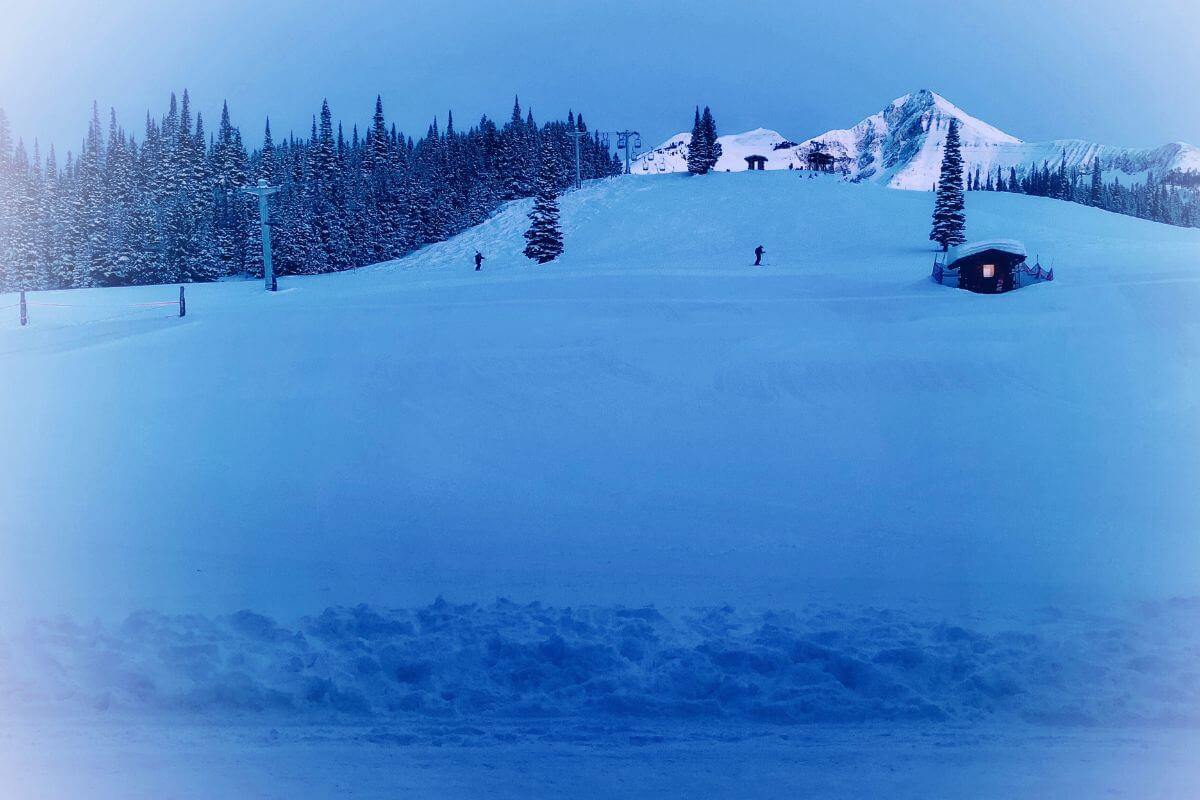
When it comes to winter activities, Montana is a true wonderland. The snow-covered mountains and wide-open trails create the perfect playground for adventure on snow.
- Skiing and Snowboarding – These are two of the most popular activities in Montana, and for good reason. The state boasts some incredible ski resorts, including Big Sky Resort, Whitefish Mountain Resort, and Discovery Ski Area.
- Snowshoeing – For those seeking a quieter and more serene winter activity, snowshoeing is a fantastic option. The Glacier National Park, with its majestic peaks and glistening snow, is a particularly enchanting destination for snowshoeing.
- Angling – If you’re interested in angling, Montana’s winter is the perfect time to indulge in ice fishing and fly fishing. Find a frozen lake, drill a hole in the ice, drop your line, and wait patiently for a bite. It’s a peaceful way to enjoy the winter while engaging in a favorite pastime.
- Sightseeing – You can also simply enjoy the crisp mornings and cool nights by venturing out for a walk in one of Montana’s Cities or picturesque mountain towns such as Whitefish, Bozeman, and Kalispell. It is also a great partner for camping outdoors.
Montana’s winter season is truly a sweet spot if you love nature and outdoor adventures in the snow.
Best Time to Visit Montana Final Thoughts
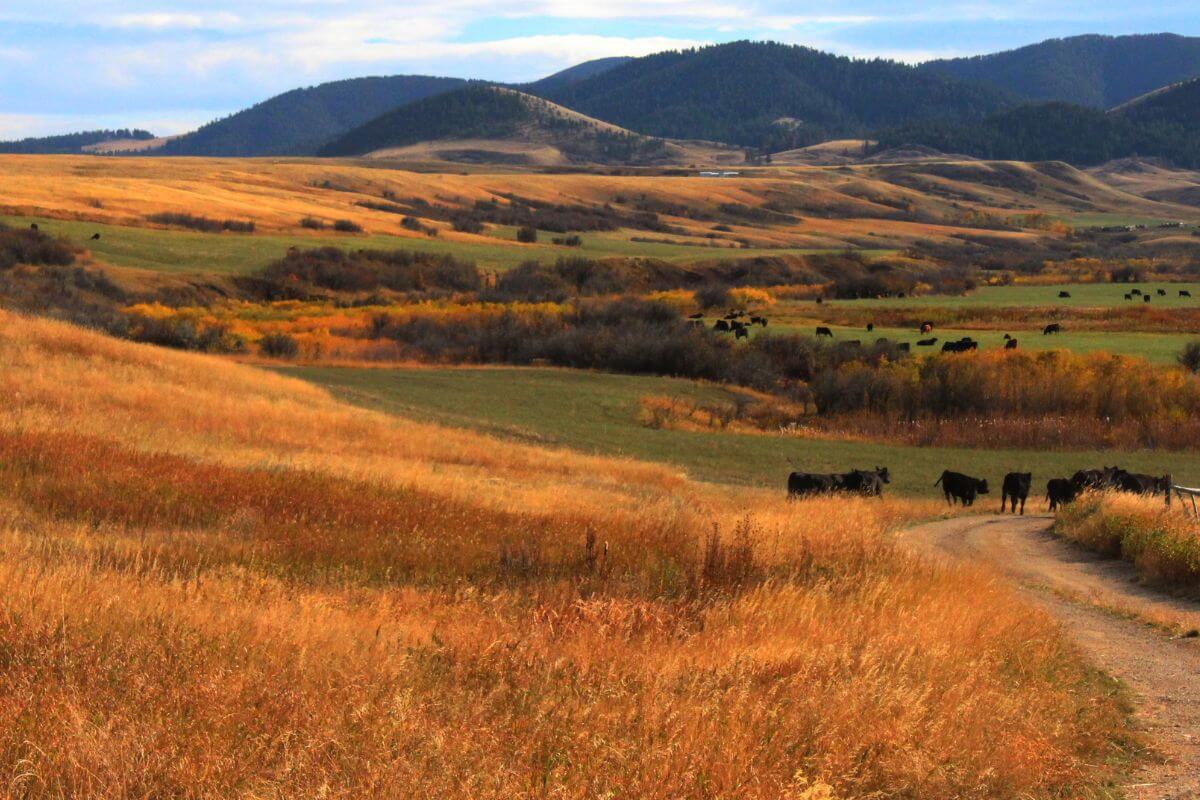
After my living and traveling in Montana my whole life, I can say that the best time to visit Montana is during the Summer months.
Summer is the ideal time to visit Montana for warmer temperatures and an opportunity to fully enjoy the state’s national parks and hiking trails.
Montana’s July to September period offers warm weather and long daylight hours, ideal for exploring its beautiful landscapes and enjoying outdoor activities.
However, you should take note that this is also a month for tourism, so booking your accommodations early is crucial to securing your Montana dream vacation ideas.
Winter in Montana on the other hand can be a bit fickle when it comes to weather conditions.
But if you’re someone who enjoys winter activities like skiing, snowboarding, or ice fishing, then Montana’s ski season and snow-covered mountains can provide plenty of exhilarating adventures.
Yet if you prefer cooler temperatures and want to avoid the crowds, spring and fall can be a great alternative.
The best time to visit Montana ultimately depends on your interests and what you want to experience.
Whether you choose to visit during the popular summer season or venture out during the fall or winter, there’s always something Montana can offer for everyone.
So prepare your bags, get ready, and begin your adventure in the stunning state of Montana.
Best Time to Visit Montana FAQs
1. Is September a Good Time to Visit Montana?
Yes, September is a great time to visit Montana. Considered to be a favorite time for Montanans to explore the state. The weather is generally pleasant with mild temperatures. Accommodation prices are also lower.
It’s also a less crowded period compared to the peak seasons, allowing for more peaceful outdoor exploration and wildlife viewing opportunities.
2. What Is Off-Season in Montana?
The off-season in Montana also referred to as the mud season typically refers to the period between late fall and early spring when tourist activity decreases due to colder weather and less favorable outdoor conditions.
This period usually spans from late October to early April, with the peak of the off-season occurring during the winter months.
3. Why Do Tourists Go to Montana?
Tourists visit Montana for many different reasons.
Many people visit to experience Montana’s natural landscapes, including national parks like Glacier National Park and Yellowstone National Park, along with outdoor activities like skiing and hiking.
Learn more about Montana right now! Keep your mind engaged with these articles:
- https://www.umt.edu/this-is-montana/columns/stories/montana-winters.php
- https://wrcc.dri.edu/Climate/narrative_mt.php
- https://www.nps.gov/glac/planyourvisit/weather.htm
- https://msl.mt.gov/geoinfo/geography/geography_facts/elevation_of_montana_cities
- https://flbs.umt.edu/newflbs/flathead-lake/lake-facts/

